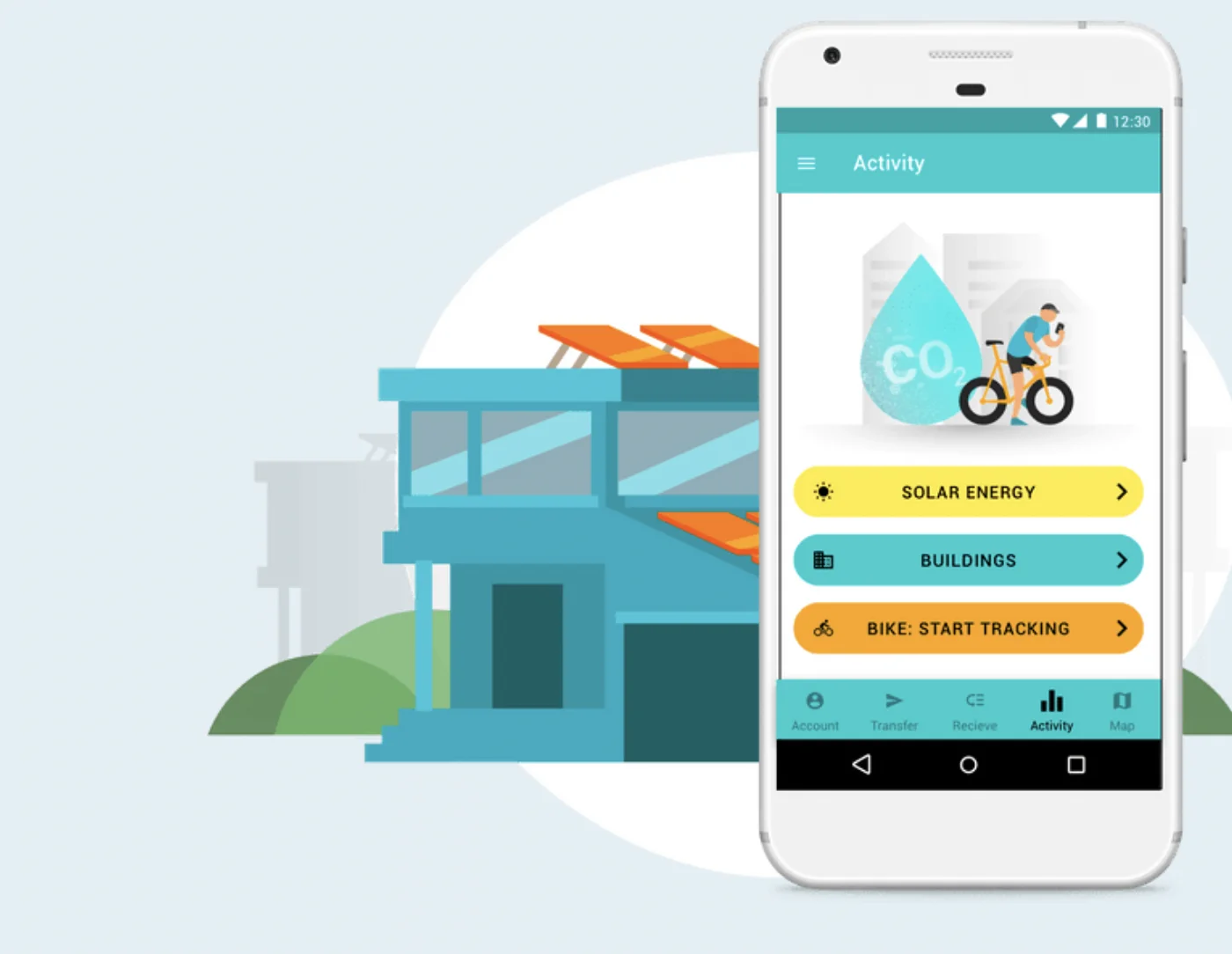Despite common stereotypes, the green approach goes far beyond just recycling. Eco-friendly ideas encompass innovative technologies and science fields. Furthermore, they are constantly evolving. In particular, the green tech market reached a $10.9 billion value in 2021. And over $44.4 billion are forecasted by 2028.
S-PRO also participates in green tech. Moreover, among other things, we create renewable energy software for our clients. With this article, we want to demonstrate the possibilities of green tech for better business approaches.
What’s Green Tech?
Green technology (green tech) is a solution based on a mix of science and technology to produce eco-friendly goods and services. It mitigates or reverses the effects of human activity on the environment.
People often confuse green and clean tech. Cleantech reduces energy use, waste, costs, and environmental effects. Green technology innovation, in turn, refers to sustainable forms of energy production. Furthermore, new green technology finds renewable energy sources and prevents natural resource depletion.
In 2022 there is no need to explain the importance of environmental protection and consciousness. But why green tech became so crucial?
Why do We Need Green Tech?
Green tech has a lot of benefits over fossil resources, as its goal is to be friendly to the environment. There are several examples of them, including but not limited to the following:
- Green tech requires fewer maintenance costs, hence reducing operational costs.
- Green tech uses renewable natural resources, which we can’t exhaust.
- Green tech results in less CO2 emissions
- New green technology companies emerge and stimulate the economy by creating new jobs.
Green technology is going beyond a choice of a single individual. Companies can apply a green technology solution in numerous industries to function independently and cause less harm to the environment. We used to work with one of them.
12 Troubling Questions about Green Technology and Answers to Them
1. What are the most significant advancements in green technology in recent years?
Significant advancements in green technology include the development of high-efficiency solar panels using advanced materials like perovskites for improved energy conversion rates and reduced manufacturing costs. Innovations in wind turbine technology have led to larger, more efficient turbines capable of generating higher yields from wind resources.
Additionally, advancements in energy storage solutions, such as lithium-ion batteries and grid-scale storage systems, have enhanced the reliability and integration of solar and wind energies into existing power grids.
2. What are the key benefits of investing in green technology for businesses?
Investing in green technology for businesses translates into cost savings through energy efficiency, enhanced corporate social responsibility (CSR) credentials, and compliance with environmental regulations. It also reduces operational costs by minimizing energy consumption and waste production. S-PRO creates bespoke renewable energy software solutions that streamline energy management and maximize operational efficiencies.
Investments in environmentally responsible initiatives, such as renewable energy projects, yield a higher ROI than traditional fossil fuel-based projects, especially when factoring in tax incentives and future carbon pricing.
3. How can green technology be integrated into urban planning and development?
Urban planning and development are increasingly integrating green technology solutions to create sustainable and resilient cities. Initiatives include green building certifications like LEED, promoting eco-friendly construction practices, and energy-efficient building designs. To enhance sustainability, cities are integrating green technologies such as IoT-enabled energy management systems and intelligent transportation networks.
4. What role does green technology play in renewable energy production?
Green technology is pivotal for renewable energy production. Technologies like solar photovoltaics, wind turbines, and hydropower systems harness natural resources to generate electricity without depleting finite fossil fuel reserves or emitting greenhouse gases. Advancements in these technologies have driven down costs and improved efficiency, making renewable energy increasingly competitive in the global energy market.
Furthermore, innovations in energy storage and grid integration solutions enhance the reliability and scalability of renewable energy sources, supporting their integration into existing energy infrastructures.
5. What are the challenges faced in the adoption and implementation of green technology?
The adoption and implementation of green technology face high initial costs, technological limitations, infrastructure requirements, regulatory complexities, and public awareness. They hinder widespread adoption and make scaling green technology solutions challenging. Innovation, collaboration, and supportive policies will help fulfill green technology's potential in promoting sustainable development.

6. How does green technology impact the economy and job market?
Green technology positively impacts the economy and job market by driving innovation, creating new industries, and generating employment opportunities. Investments in renewable energy projects and energy-efficient technologies stimulate economic growth, attract capital inflows, and foster entrepreneurship.
The shift towards sustainable manufacturing, construction, and transportation practices creates demand for skilled labor in green jobs, from renewable energy engineers to sustainability consultants.
7. What are the environmental benefits of green technology in transportation?
Green technology in transportation helps reduce greenhouse gas emissions and air pollutants. Electric vehicles (EVs) eliminate tailpipe emissions associated with internal combustion engines, improving urban air quality and public health. Sustainable transportation solutions, such as fuel-efficient vehicles and public transit systems, further reduce carbon footprints and traffic congestion.
By promoting cleaner transportation alternatives, green technology helps mitigate climate change and preserve natural resources for future generations.
8. How can individuals contribute to the promotion and use of green technology?
Each of us can contribute using these green tech tips.
- Installing solar panels or using energy-saving appliances at home;
- Supporting policies and initiatives incentivizing renewable energy adoption and sustainable practices;
- Opting for eco-friendly transportation, such as walking, biking, or public transit;
- Raising awareness about the benefits of green technology through education and advocacy.
9. What are the future trends and potential developments in green technology?
The global green technology and sustainability market will grow to $89.97 billion by 2032 at a CAGR of 20.9%. Key trends include:
- Integration of AI, IoT, and blockchain with green solutions to enhance data-driven sustainability outcomes.
- Innovations in energy storage, such as next-generation batteries and hydrogen fuel cells, to revolutionize renewable energy integration and enhance grid stability.
- Smart cities and IoT-driven infrastructure will improve resource management and urban sustainability.
- Biotechnological advancements in biofuels and biomaterials will offer sustainable alternatives in manufacturing.
10. What is the role of green technology in waste management and recycling?
Green technology transforms waste management and recycling practices, reducing environmental impact. Technologies such as waste-to-energy systems convert organic waste into renewable energy sources, reducing landfill emissions and generating clean electricity. Advanced recycling technologies enable the recovery and reuse of valuable materials from electronic waste and industrial by-products, minimizing waste disposal.
11. What are the differences between green technology and traditional technology?
The primary differences between green and traditional technology lie in their environmental impact and sustainability considerations. Green technology minimizes resource consumption, reduces emissions, and promotes renewable energy sources. On the other hand, traditional technology often relies on fossil fuels and non-renewable resources with higher environmental footprints.
Green technologies prioritize efficiency, using advanced materials and processes to minimize waste and pollution, while traditional technologies prioritize cost and convenience over environmental concerns.
12. How can green technology help in combating climate change?
Green technology reduces greenhouse gas emissions, promotes energy efficiency, and advances renewable energy sources. Its multiplier effect is crucial for achieving climate goals by driving systemic decarbonization and efficiency gains across industries. Technologies such as solar power, wind turbines, and electric vehicles reduce reliance on fossil fuels, lowering carbon footprints and mitigating global warming.
Energy-efficient building designs and smart grid systems reduce electricity demand. Green technology innovations in agriculture, forestry, and industry promote sustainable practices, enhancing climate resilience. Accelerating the global adoption of green technologies is crucial for addressing climate challenges.
How did We Create Climate Drops, Green Blockchain Startup?
Our client wanted to encourage people for eco-responsible decisions. So they needed a platform of a green technology solution that tracks and rewards users for green actions. And we created Climate Drops.
Challenges
To build a reliable and safe app, we chose Blockchain technology. As our team had broad expertise in Blockchain, we agreed.
The idea of rewarding eco-friendly actions required a far more diverse audience than just individuals. The client also wanted to encourage businesses and corporations. That’s why there offered three roles in this green software: Sources (users), Lakes (companies), and Seas (funds).
The first one, users reduce harmful emissions. Businesses sell collected Drops to funds. By this, they invest in environmental protection on the global level. And the third role, funds, is environmentally friendly businesses that accept Climate Drops for goods and services.
The rewards in the app are called Drops. Drops are coins stored in an online blockchain-based wallet. Users can exchange them for snacks and other gifts in their city.

Solution
The process is the following. Initially, users take photos as proof of their eco-friendly actions of any kind. Then they get coins as a reward, which they can spend in local stores. Thus, our green tech app is straightforward in use, flexible in providing tips, and safe in keeping coins.
Also, we added value to the users and implemented additional useful features like:
- a display of saved thermal and electrical energy amounts,
- calculation of reduced CO2 emissions,
- GPS-tracking to check the distance of bicycle rides,
- mapping with partnering businesses’ locations.
As the app is about eco-friendliness, we chose inspiring and emotional looks. A simple layout and intuitive navigation are must-have features here.
Result
In the end, the app became a green technology solution indeed. It is constantly improving and expanding. Through its users in three cities of Ukraine, Climate Drops reduces around 0.5 tonnes of CO2 per app user. The same amount is produced for a 3 000 km diesel car trip or 60,821 smartphones charged.
Still, the process is not restricted to only coins and shops. For example, in 2018, Climate Drops organized a competition to motivate environmentally-conscious students. During this competition, 363 tonnes of CO2 emissions were reduced.
Ultimately, all these activities show that green tech is an integral part of current businesses. It can encourage consumers without negative outcomes to nature.
Where is Green Tech Applied?
Green technology innovation can be used almost everywhere. We selected some of the most influential areas of green technology. Consider them in your business.
Geothermal Heating
An increasing trend in energy-efficient houses and structures is geothermal heating. Early humans constructed lava houses and took baths in hot springs. However, nowadays, we can generate electricity from geothermal activity.
For instance, the United States, a global leader in geothermal electricity generation, generated over 16 billion kilowatt hours in 2021. This energy was enough to supply more than 15 million residential utility customers. This amount, for instance, can maintain a city like New York.
Sadly, this green technology solution is not enough to support all needs in electricity supply, but we can use other renewable sources.
Wind Energy
Our ancestors used it as early as 5000 B.C. to move boats down the Nile. By 2000 B.C., grain was crushed, and water was pumped using wind power. Today, wind power plants are almost a common thing in most countries.
The wind is a plentiful and limitless resource. Moreover, it also generates power without consuming fuel or damaging the environment. To produce electricity, wind turbines use the mechanical energy of the wind to turn a generator.
Being new green technology, the usage of wind energy prevents 329 million metric tons of carbon dioxide emissions annually. The same amount of emissions is produced by 71 million cars.
Furthermore, wind power is cost-effective. It is one of the most affordable energy sources. Moreover, wind energy green tech is simple to incorporate in rural or isolated places, such as farms and ranches or coastal and island villages.
Solar Energy
People started utilizing sun energy to ignite fires with magnifying glasses. Nowadays, green technology innovation can convert sunlight into electricity with the help of special panels.
Although solar panels are affordable, their efficiency is highly dependent on weather conditions. It makes them an excellent secondary energy source but not the main one. Solar panels are also exposed to physical damage as earthquakes and hail.
Water Energy
Even if we are used to hydroelectric power plants, the tide energy power station is new. However, wave energy is a significant renewable energy source that uses the motion of waves.
Ocean waves generate kinetic energy as they travel across the water. This movement can power turbines, which convert motion into electricity. Wave size and power can change depending on the moon cycles, winds, and environment.
The drawback of wave energy is that most wave energy systems are small enough for large buildings or structures. This is because the supply relies on the waves’ height, speed, and length density.
Despite difficulties in predicting workloads, technology evolves. And wave power plants have become more and more widespread, becoming a common green technology solution.
Green Energy Storage Technology
The most significant difficulty of renewable energy sources is their unpredictability. Thus, they require a storage solution. But storing energy for a typical home’s daily consumption is expensive, as batteries are costly and lack efficiency.
That is why this new green technology researches ways to accumulate and store energy from renewable sources. The following directions of their investigation include:
- Li-ion, zinc-bromide gel, and solid-state batteries.
- Reversible hydro dams.
- Smart-grid energy use optimization solutions.
Hydrogen
Fuel-cell electric vehicles, unlike battery-powered ones, run on hydrogen. It makes them far more efficient than ordinary combustion-powered vehicles. Besides, they don’t produce harmful emissions, making hydrogen a part of the green tech pool.
Hydrogen fuel is still expensive for ordinary customers. However, many locations around the world already sell hydrogen-powered automobiles. The global hydrogen vehicle market size reached USD 0.65 billion in 2021. Yet, it is expected to grow to USD 43.19 billion by 2030.

Green Building
Green building is a new green technology that focuses on sustainability in the construction processes. It comprises developing and using friendly building materials and construction methods.
Traditional buildings and construction account for 50% of greenhouse gas emissions worldwide. Low-carbon structures are made to release little or no carbon during their existence. For example, they have little heating and cooling needs. Rooftops are equipped with solar panels.
Thus, low-carbon buildings are essential for a green future.
Green Chemistry and Nanotechnology
Green chemistry aims to design new chemicals that do not affect the environment. With time, these new chemicals are planned to replace more harmful ones. It makes green chemistry a green technology innovation.
The usage of green chemicals is limitless. They participate in construction, production, consumer products, packaging, etc. One of the options is to provide nanotechnologies.
They are used to develop new nanomaterials in the manufacture of various sustainable and tear and wear-proof products:
- Crack-resistant paints
- Transparent sunscreens
- Stain-repellent fabrics
- Self-cleaning windows
- Ceramic coatings for solar cells
Nanotechnologies improve manufacturing methods, water purification systems, energy systems, nanomedicine, better food production methods, nutrition, etc.
Green Software
Green software is designed to limit energy consumption and measure minimal environmental impact.
Once Microsoft created Principles of Sustainable Software Engineering, other companies joined the trend. Moreover, in 2021, Microsoft, Thoughtworks, Accenture, and GitHub established the Green Software Foundation. It is a nonprofit organization developing ecosystems of “people, standards, tooling, and best practices for green software.”
Sustainable Software Engineering includes skills for developing and managing a bit of green technology solutions.
- Developers should build software that offers users value while producing fewer carbon emissions. There are eight guidelines for creating green software:
- Applications that require less energy do so by using software components.
- Companies should consume as much electricity as possible from renewable energy sources.
- Organizations should build green software that reduces carbon releases from electronic devices.
- How much a device is used and how much electricity it consumes is known as energy proportionality. This principle maximizes the hardware’s energy efficiency by ensuring a high utilization rate.
- Minimizing the amount of data and their travel distance over the network lowers carbon emissions. Moreover, it boosts the software’s energy efficiency.
- Shifting computing power to a different time or location
- Continuous, long-term optimization techniques can improve software’s overall carbon efficiency.
In the end, green software helps to build a sustainable and energy-efficient network. It provides an understanding of whether the analyzed process is genuinely sustainable.
What is Green Tech Negative Outcome?
Despite its long list of advantages, new green technology has its difficulties.
Firstly, this approach is new. Not all people and companies know how crucial it is for future business stability. It needs yet to spread the word across societies.
Furthermore, implementation costs are very high compared to traditional energy sources. Therefore, initial investments can be fundamental.
However, green technology is still emerging. Many products are in the research and development stage. They still need a lot of upgrades. Besides, in most countries, green technology-based policies have yet to be finalized.
The same thing refers to the qualifications of engineers. Developing green technology is complex, and skilled human resources are outnumbered.
Finally, only time will help to make green tech a standard solution.
Conclusion
Every year, green technologies emerge more and more. Science and technologies unite to make our future independent of fossil energy resources. Individuals and companies choose renewable sources to invest in sustainability. It has become more than a common trend.
S-PRO develops advanced renewable energy software solutions for its clients. We know the tech side well enough to create green software that best matches your business’s needs.
Contact us if you have any questions about green software. Our skilled team will gladly get to work on your project.






